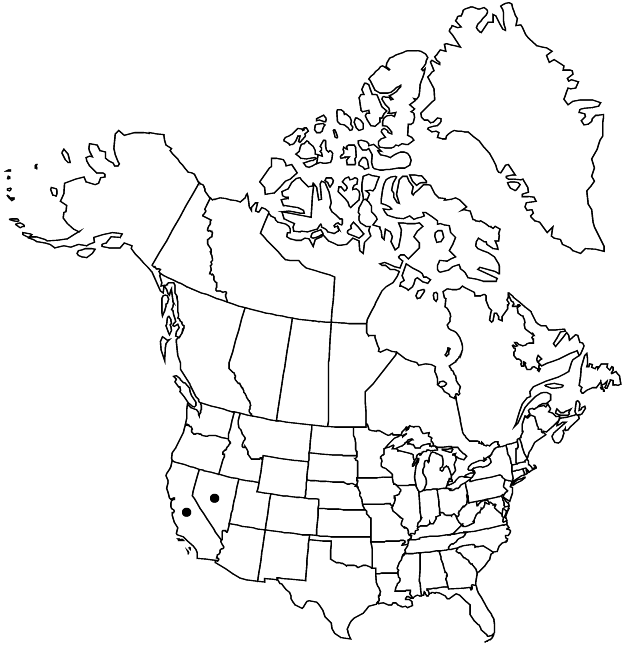Eriogonum rixfordii
Leafl. W. Bot. 1: 29. 1932.
Herbs, erect, annual, (1.5–)2–4 dm, glabrous, greenish to grayish. Stems: caudex absent; aerial flowering stems erect, solid, not fistulose, 0.3–2 dm, glabrous. Leaves basal; petiole 1–3(–5) cm, floccose; blade cordate to orbiculate, (0.5–)1–3 × (0.5–)1–3 cm, densely white-tomentose abaxially, less so to subglabrous and grayish to greenish adaxially, margins entire. Inflorescences cymose, diffuse, of many horizontal tiers of flat-topped branches, 10–35 × 5–35 cm; branches glabrous; bracts 3, scalelike, 1–3 × 0.5–1.5 mm. Peduncles absent. Involucres deflexed, narrowly campanulate, 1–1.5 × 1.5–2 mm, glabrous; teeth 5, erect, 0.4–0.7 mm. Flowers 1.3–1.5 mm; perianth white with greenish midribs, becoming reddish, glabrous; tepals dimorphic, those of outer whorl narrowly oval to cordate, those of inner whorl narrowly lanceolate; stamens included, 1–1.3 mm; filaments glabrous. Achenes dark brown, lenticular, 1.3–1.5 mm, glabrous. 2n = 40.
Phenology: Flowering Jun–Dec.
Habitat: Sandy to gravelly washes and slopes, saltbush communities
Elevation: (30-)100-1600 m
Discussion
Of conservation concern.
Eriogonum rixfordii is occasional in the Death Valley area of Inyo County, California, and adjacent southwestern Nye County, Nevada. Its habit is so striking that it is often collected as a novelty. It is rarely common and never weedy.
Selected References
None.
